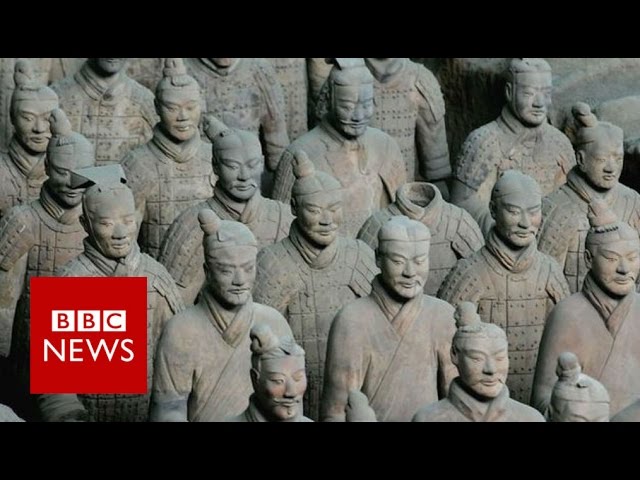The Terracotta Army is one of the most remarkable archaeological finds of the 20th century. It is a collection of more than 8,000 terracotta figures that were buried with the first emperor of China, Qin Shi Huang, in 210–209 BC. The figures, which range in height from just over one foot to nearly seven feet, depict warriors, chariots, horses, officials, acrobats, strongmen, and musicians. They are believed to have been created to protect the emperor in the afterlife. The figures are amazingly detailed and lifelike, and they provide an incredible glimpse into the ancient Chinese culture and its views on death and the afterlife.
History of the Terracotta Army
The Terracotta Army was discovered in 1974 by farmers digging a well near the city of Xi’an, in the Shaanxi province of China. The figures had been buried more than 2,000 years ago, and the excavation of the site has been ongoing ever since. The site is now a popular tourist attraction, and it is one of the most important archaeological discoveries in Chinese history.
The terracotta figures were part of an elaborate mausoleum that was built for the first emperor of China, Qin Shi Huang. The mausoleum was built over 38 years, and it is estimated that over 700,000 workers were involved in its construction. The terracotta figures were placed in pits around the mausoleum, with each pit containing a different type of figure. The largest pit is believed to contain over 6,000 warriors, and it is believed that the entire site contains over 8,000 figures.
Significance of the Terracotta Army
The discovery of the Terracotta Army has provided an incredible insight into the culture and beliefs of ancient China. The figures provide an incredible glimpse into the art and craftsmanship of the time, and they also offer insight into the beliefs of the Chinese people about death and the afterlife. The figures are incredibly lifelike and detailed, and they are a testament to the skill and craftsmanship of the people of the Qin dynasty.
The Terracotta Army is also an important part of Chinese history and culture. The figures represent the first emperor of China, and they are a reminder of the power and grandeur of the Qin dynasty. The discovery of the Terracotta Army has helped to shed light on the ancient Chinese culture and its views on death and the afterlife.
Structure of the Terracotta Army
The Terracotta Army is divided into three main pits. The largest pit, Pit 1, is believed to contain over 6,000 figures, including warriors, chariots, horses, and officials. Pit 2 contains around 1,400 figures, including acrobats, strongmen, and musicians. Pit 3 contains around 68 warriors, and it is believed to have been the command center of the army.
Each figure is unique, and they are incredibly detailed and lifelike. The figures are made from terracotta clay and are painted with bright colors. The figures range in height from just over one foot to nearly seven feet. The warriors are all armed with weapons, and they are believed to have been created to protect the emperor in the afterlife.
Preservation of the Terracotta Army
The preservation of the Terracotta Army is a major challenge. The figures have been exposed to the elements for more than 2,000 years, and they are vulnerable to damage from weather, pollution, and human activity. The Chinese government has taken steps to protect the site, including restricting access to the pits and providing climate-controlled storage for the figures.
Conclusion
The Terracotta Army is one of the most remarkable archaeological finds of the 20th century. The figures provide an incredible glimpse into the art and craftsmanship of the Qin dynasty, as well as the beliefs of the Chinese people about death and the afterlife. The preservation of the figures is a major challenge, but the Chinese government is taking steps to protect the site for future generations.


0 Comments